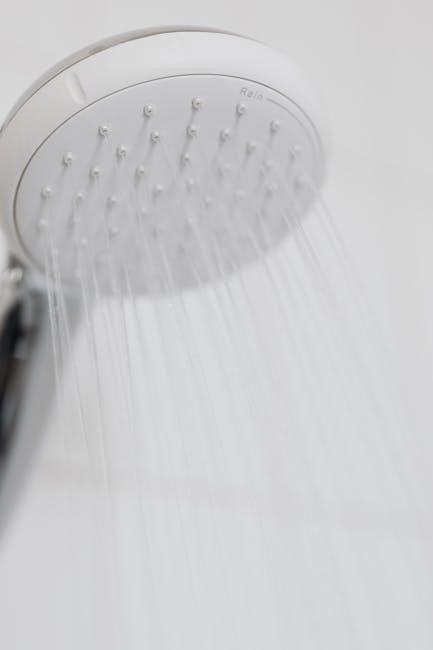Pipe bender guides are essential tools for precise tube bending, ensuring smooth curves without damage. They are versatile devices used across various industries, from plumbing to automotive, offering consistency and reducing errors in bending processes.
1.1 What Are Pipe Bender Guides?
Pipe bender guides are tools designed to shape metal tubes into precise curves. Available in manual, hydraulic, and CNC types, they ensure smooth, accurate bends. Essential in plumbing, automotive, and manufacturing, these guides help create consistent, professional connections, reducing material waste and enhancing project efficiency by preventing kinks and damage.
1.2 Importance of Pipe Bender Guides in Tube Bending
Pipe bender guides are crucial for achieving precise tube bends, minimizing errors, and preventing damage. By maintaining consistent angles and reducing material waste, they enhance efficiency and safety in various industries. Proper use of guides ensures professional-grade results, making them indispensable in both industrial and DIY projects for achieving high-quality, durable connections.
1.3 Brief History and Evolution of Pipe Bender Guides
Pipe bender guides originated in the early 20th century, evolving from simple manual tools to advanced hydraulic and CNC systems. The mid-1900s saw hydraulic versions emerge, offering precise control. By the late 1900s, CNC technology revolutionized the field, enabling complex bends with high accuracy. Modern guides now feature durable materials and computer-aided designs, ensuring longevity and performance across industries like construction, automotive, and manufacturing.

Types of Pipe Bender Guides
Pipe bender guides come in manual, hydraulic, and CNC types, each catering to different needs. They offer varying levels of precision, speed, and versatility for diverse applications.
2.1 Manual Pipe Bender Guides
Manual pipe bender guides are simple, cost-effective tools for bending pipes. They rely on physical effort, making them ideal for small-scale projects. These guides are portable and easy to use, offering precision for creating consistent bends. They are often preferred in workshops or DIY settings where hydraulic or CNC systems are unnecessary. Regular use requires proper technique to avoid damage and ensure accurate results.
2.2 Hydraulic Pipe Bender Guides
Hydraulic pipe bender guides are powerful tools designed for heavy-duty applications. They use pressurized fluid to bend pipes with high precision and speed. These guides are ideal for industrial settings, offering consistent results and reducing operator fatigue. Advanced models feature adjustable pressure settings, enabling precise control over various pipe sizes and materials, making them essential for large-scale projects requiring reliability and efficiency.
2.3 CNC Pipe Bender Guides
CNC pipe bender guides offer advanced automation for precise and repeatable tube bending. Utilizing computer-controlled systems, these guides ensure accuracy and efficiency in producing complex shapes. Ideal for high-volume production, they minimize human error and optimize workflow. With programmable settings, CNC guides adapt to various materials and sizes, making them a cornerstone in modern manufacturing for achieving consistent, high-quality results.

How to Choose the Right Pipe Bender Guide
Selecting the right pipe bender guide involves considering factors like pipe size, material, and bending capacity. Ensure compatibility with your tools and project needs for optimal results.
3.1 Factors to Consider When Selecting a Pipe Bender Guide
When selecting a pipe bender guide, consider the pipe’s diameter, material type, and thickness. Additionally, evaluate the bending capacity, precision requirements, and compatibility with your bending tool. The guide’s durability and ease of adjustment are also crucial to ensure smooth, accurate bends without damaging the pipe. Proper alignment and support features should not be overlooked for optimal results. Always match the guide to your specific project needs for the best outcomes.
3.2 Understanding Pipe Sizes and Materials for Proper Guidance
Understanding pipe sizes and materials is crucial for proper guidance. Pipe diameters, wall thicknesses, and materials like copper, steel, or PVC vary, affecting flexibility and bending techniques. Each material requires specific handling to avoid damage. Matching the guide to the pipe’s specifications ensures precise bends, enhancing efficiency and preventing errors during the bending process.
3.3 Bending Capacity and Precision Requirements
Bending capacity and precision are vital for achieving accurate results. Guides must accommodate the pipe’s diameter and material while maintaining the desired angle. High-precision tools reduce errors, ensuring consistent bends. Assessing these factors helps select the right guide, optimizing performance and minimizing material waste during the bending process for various applications.
Safety Tips for Using Pipe Bender Guides
Always wear protective gear, follow manufacturer guidelines, and ensure proper machine setup. Keep loose clothing tied back and avoid overreaching. Regular inspections prevent accidents, ensuring safe operation.
4.1 Basic Safety Precautions When Working with Pipe Benders
Wear safety gloves, goggles, and steel-toe boots. Ensure the work area is clear of obstructions. Keep hands away from moving parts and never operate the bender without proper training. Always follow the manufacturer’s instructions and perform regular maintenance checks to prevent mechanical failures. Proper alignment of the pipe is crucial to avoid accidents and ensure precise bending. Regular lubrication of moving parts can reduce wear and tear, extending the tool’s lifespan while maintaining optimal performance. Additionally, ensure the bender is securely positioned to prevent unintended movement during use.
4.2 Handling and Storing Pipe Bender Guides Safely
Store pipe bender guides in a dry, cool place to prevent rust and damage. Use protective covers or cases to shield them from dust and moisture. When handling, avoid dropping or applying excessive force, as this can cause wear or breakage. Clean and lubricate guides regularly to maintain their condition. Proper storage extends their lifespan and ensures optimal performance in future projects. Always follow manufacturer guidelines for storage and maintenance to preserve quality and functionality.

Maintenance and Care of Pipe Bender Guides
Regular cleaning and lubrication of pipe bender guides prevent rust and wear. Inspect guides for damage, replacing worn parts promptly to maintain precision and efficiency in bending tasks.
5.1 Cleaning and Lubricating Pipe Bender Guides
Clean pipe bender guides regularly by removing dirt and debris. Use a soft cloth and mild solvent to wipe down surfaces. Dry thoroughly to prevent rust. Apply rust-inhibiting lubricant to moving parts to ensure smooth operation. Clean guides after each use to avoid contamination. Proper lubrication extends tool life and maintains bending accuracy. Store guides in a dry, protected area when not in use.
5.2 Regular Inspection and Replacement of Worn Parts
Regularly inspect pipe bender guides for wear, misalignment, or damage. Check for excessive play or corrosion in moving components. Replace worn parts promptly to maintain precision bending. Use original or compatible replacement parts to ensure proper fit and function. Regular inspections prevent unexpected breakdowns and ensure consistent bending performance, extending the lifespan of your pipe bender guides and maintaining productivity.

Using Pipe Bender Guides Effectively
Align the pipe securely in the guide, ensuring proper fit for precise bending. Use the handle bump as a marker for consistent angles and record measurements for accuracy.
6.1 Step-by-Step Guide to Bending Pipes with Precision
Align the pipe in the bender, ensuring it’s centered and secure. Use the handle bump as a marker for consistent angles. Bend slowly, checking progress frequently. Record measurements for future reference to maintain accuracy across projects. This method ensures smooth, precise curves every time, minimizing errors and enhancing efficiency in tube bending tasks.
6.2 Adjusting the Guide for Different Pipe Sizes and Angles
Align the pipe securely in the bender, adjusting the guide to fit the pipe’s diameter. Set the desired angle using the handle bump as a reference. Ensure the guide is evenly positioned for consistent bends. For varying sizes, modify the guide’s width or use interchangeable dies. Regularly lubricate moving parts to maintain smooth operation and precision across different materials and angles.
Common Mistakes to Avoid When Using Pipe Bender Guides
Avoid misalignment, overbending, and insufficient support. Ensure proper lubrication and alignment to prevent pipe damage. Regularly inspect guides for wear and tear to maintain accuracy and longevity.
7.1 Misalignment of the Pipe in the Bender
Misalignment occurs when the pipe is not properly centered or aligned in the bender, leading to uneven bends or damage. To avoid this, always ensure the pipe is securely positioned and aligned with the guide before bending. Use alignment tools or fixtures to hold the pipe steady, and double-check its placement to achieve accurate results.
7.2 Overbending or Underbending Pipes
Overbending or underbending pipes can lead to inaccurate angles, damaging the pipe or requiring rework. To prevent this, ensure precise measurements and use guides for alignment. Monitor the bending process closely to avoid exceeding or falling short of the desired angle. Proper calibration and technique are key to achieving the correct bend every time, minimizing waste and ensuring durability.
Advanced Techniques for Mastering Pipe Bender Guides
Mastering pipe bender guides involves creating complex shapes and angles with precision. Using multiple guides for intricate designs enhances efficiency and achieves flawless bends in various materials.
8.1 Bending Complex Shapes and Angles
Bending complex shapes and angles requires precise guide adjustments and advanced techniques. For spiral bends, gradually adjust the guide while applying consistent pressure. Multi-plane bends demand accurate alignment and step-by-step adjustments. Using specialized guides for intricate designs ensures smooth transitions and avoids material stress. Practice and patience are key to mastering these challenging bends with precision and consistency.
8.2 Using Multiple Guides for Intricate Designs
Using multiple pipe bender guides allows for intricate designs by layering bends and achieving multi-planar curves. Start with a primary guide for the base shape, then add secondary guides for detailed angles. This method ensures precision and minimizes errors. For complex projects, align guides carefully and bend in stages to maintain control and achieve the desired intricate design.

Case Studies and Real-World Applications
Pipe bender guides are widely used in residential plumbing for precise tube shaping and in industrial settings for manufacturing complex pipe systems, ensuring efficiency and accuracy.
9.1 Residential Plumbing Projects Using Pipe Bender Guides
Pipe bender guides are indispensable in residential plumbing for creating precise bends in pipes. They enable plumbers to install pipes efficiently under sinks, around corners, and in tight spaces, ensuring leak-free connections and aesthetic appeal. Their versatility and ease of use make them a crucial tool for modern plumbing systems, enhancing both functionality and durability.
9.2 Industrial Applications of Pipe Bender Guides
Pipe bender guides play a vital role in industrial settings, enabling precise tube bending for machinery, HVAC systems, and automotive manufacturing. They are used to create complex geometries in pipelines, ensuring durability and efficiency. Industries rely on these guides for consistent, high-quality bends, reducing material waste and enhancing production workflows. Their adaptability to various materials and sizes makes them indispensable in industrial environments.
Future Trends in Pipe Bender Guide Technology
Future trends include automation, smart systems, and eco-friendly materials, enhancing precision and efficiency. These advancements aim to streamline tube bending processes, reduce environmental impact, and improve industrial workflows.
10.1 Automation and Smart Pipe Bending Systems
Automation and smart systems are revolutionizing pipe bending, offering enhanced precision and efficiency. These advanced tools utilize real-time data and AI to optimize bending processes, reduce errors, and improve productivity. They enable seamless integration with modern manufacturing systems, ensuring high-quality results and adaptability to complex projects.
10.2 Eco-Friendly Materials for Pipe Bender Guides
Eco-friendly materials are increasingly being adopted for pipe bender guides, reducing environmental impact. Sustainable options like recycled metals and biodegradable plastics are gaining popularity. These materials maintain durability while lowering carbon footprints, aligning with global efforts to promote green manufacturing. Innovations in material science are driving the development of energy-efficient and environmentally responsible pipe bending solutions.
Pipe bender guides are essential tools for precise tube bending, ensuring efficiency across industries. Their evolution and eco-friendly innovations promise a future of enhanced precision and sustainability.
11.1 Summary of Key Points
Pipe bender guides are crucial for precise tube bending, minimizing waste and ensuring accuracy. They come in manual, hydraulic, and CNC types, each suited for specific needs. Proper selection involves understanding pipe sizes, materials, and bending capacity. Regular maintenance and safety precautions are essential for optimal performance. By mastering these tools, users can achieve consistent, high-quality results in various applications, from plumbing to industrial manufacturing.
11.2 Final Tips for Maximizing Pipe Bender Guide Efficiency
To maximize efficiency, ensure proper calibration and maintain tools regularly. Keep a record of bends for consistency and adjust guides for precise angles. Use appropriate materials and avoid overbending. Regular inspections and timely part replacements prevent downtime. Always follow safety guidelines and consider eco-friendly options for sustainable practices. These steps ensure optimal performance and longevity of your pipe bender guides.

References and Further Reading
Consult manufacturer manuals, engineering forums, and industry guides for detailed insights. Visit reputable websites and technical libraries for comprehensive resources on pipe bender guides and their applications.
12.1 Recommended Resources for Pipe Bender Guides
Explore manufacturer manuals, engineering forums, and technical guides for detailed insights. Websites like Engineering ToolBox and industry-specific forums offer practical tips and troubleshooting. Additionally, YouTube channels and specialized blogs provide step-by-step tutorials and real-world applications. These resources help users master pipe bending techniques and stay updated on the latest tools and methodologies.
12.2 Where to Find Detailed Manuals and Guides Online
Detailed manuals and guides for pipe bender guides are available on manufacturer websites, such as Swagelok and Rigid. Additionally, platforms like YouTube offer video tutorials, while forums like Reddit and Quora provide user experiences. Official PDF guides, such as the Engineering Base User Guide, can be downloaded for in-depth instructions. Use specific search terms like “pipe bender guide PDF” to locate these resources efficiently.